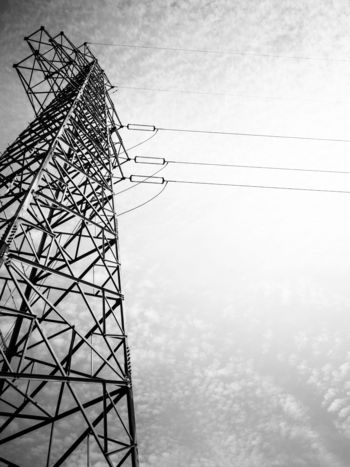Dielectrical dissipation factor measurements on stator windings – Part 1: Survey answers
Dielectric Dissipation Factor (DDF) measurement, also known as tangent delta (tanδ) or power factor testing, is the measurement of the dielectric losses in an Electrical Insulation System (EIS). In the field of rotating electrical machines, the method is used for assessing the condition of an EIS and the consistency in the manufacturing quality of individual stator bars/coils. Dielectric dissipation factor measurements are widely used, all over the world, to assess the condition of, in general, high voltage stator winding insulation of rotating machines. The DDF measurement is used to evaluate the quality of complete stator windings, both as an acceptance test after manufacturing and as test to evaluate the condition of in-service stator windings due to ageing and/or contamination.
Members
Convenor (NL)
M.G. KRIEG-WEZELENBURG
J.H. KRIEG (NL), R. MESSEL (US), S. PANT (US), O. MONTANO (US), G. VELASQUEZ (US), R. TREMBLAY (CA), H. SEDDING (CA), A. SHAIKH (CA), S. DELUCCHI (IT), A. PICCOLO (IT), A. HERRERA (DE), F. ÖTTL (AT), T. HILDINGER (BR)
Supporting members
A.M.H. KRIEG (NL), X. CHEN (NL), H. HATANO (JP), L. IMAIZUMI (BR), G. LEMESCH (AT), H. ZHU (US), J.R. WEIDNER (DE), I. SIMMONDS (BG), S. RODRÍGUEZ (ES), T. TRAN (AU), P.A. WIEHE (AU), M. BRČIĆ (HR), C. YANG (CN)
Introduction
Since updated publicly available information concerning this topic is scarce, in 2020 a new CIGRE Working Group was started to investigate DDF measurement and capacitance measurement results on complete stator windings. Such an investigation would complement the work that was already performed and published by means of TB 769 - Dielectric dissipation factor measurements on new stator bars and coils.
Purpose, approach and response
The purpose of this Working Group is to review the state-of-the-art Dielectric Dissipation Factor (DDF) testing on form wound stator windings of rotating electrical machines, to investigate typical DDF values of new and in-service stator windings, to evaluate the effectiveness of this test and whether this method provides additional value in the process of assessing the condition of stator winding insulation. This Technical Brochure (TB) shall give the user assistance in decision making for using DDF testing as a beneficial tool in evaluation of the insulation system condition of a stator winding.
The Working Group developed three questionnaires that were internationally distributed to collect DDF measurement records of newly manufactured and in-service wound stator windings of rotating electrical machines as well as information concerning the execution of these measurements, its effectiveness, and its value for determining the insulation condition. These questionnaires were sent to Original Equipment Manufacturers (OEMs), users/owners, and third-party test companies/institutions. Each questionnaire was tailored specifically to each respondent group.
The Working Group received 71 filled questionnaires and 4466 measurement sets on stator windings. 29 questionnaires for users/owners, 25 questionnaires for testing organizations and 17 questionnaires for manufacturers were filled in and returned. The records came from stator windings of 66 different manufacturers that were produced in 32 countries, resulting in a robust database for units with a rated voltage ≥ 6kV, which was considered to be sufficient to perform meaningful statistical analyses.
The amount of information and measurement results received was such that it was decided to distribute the information over two Technical Brochures:
- Part 1 containing the answers on the survey
- Part 2 containing the analysis of the obtained stator winding DDF measurement results
This executive summary is related to part 1 - the answers on the survey.
Description of the TB
After an introduction in the first chapter, the second chapter is devoted to the theory of DDF measurements. In this chapter a brief general definition of the concept of DDF and the physical background behind the DDF is introduced. To facilitate a better understanding of the concept DDF a well-established representative equivalent circuit for the insulation system is used. The chapter closes with a section on the characterization of DDF, in other words what quantities are being used to assess and compare measurements on the test objects.
In the third chapter the main types of form wound, mica based, insulation systems used in stator windings of rotating electrical machines over decades up till now are briefly presented. In chapter four the method of measuring dielectric loss factors is discussed, and those items that differ from the standard measurement...

